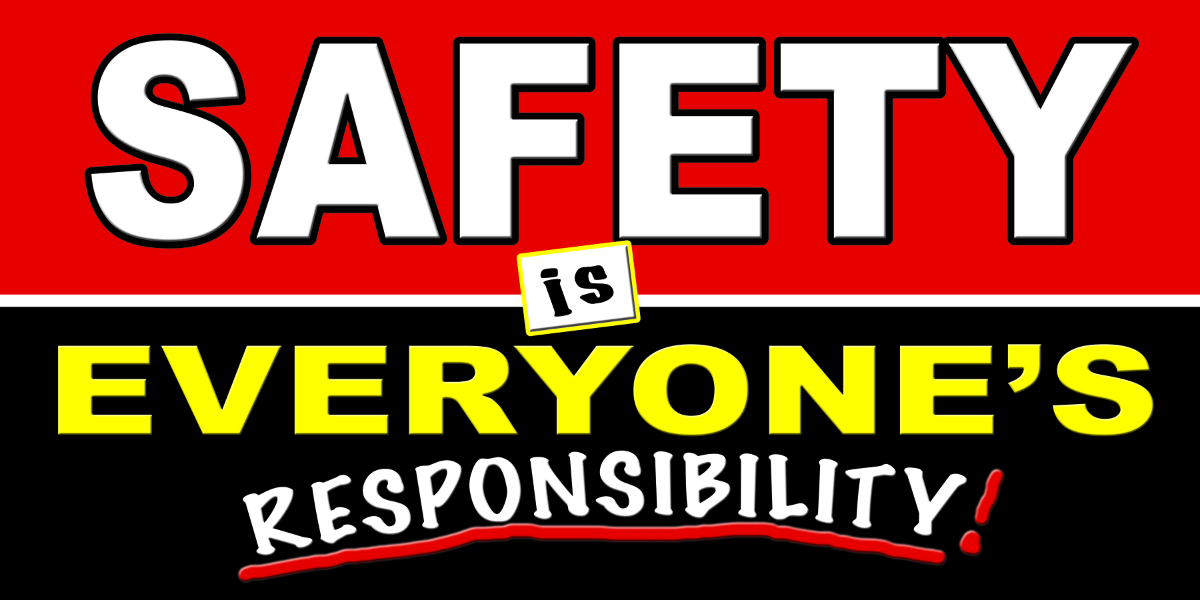Safety Banners made in Memphis, Tennessee USA
Safety Banners made in Memphis, Tennessee USA from America's largst producer of workplace safety banners.
CLICK HERE for our NEW safety store, Safety Banners USA (safetybannersUSA.com)
Our American manufacturing industry strives to keep it's workplace employees safe and out of harm's way. One of the most important methods to accomplish this safety task is the use of workplace safety banners. Unlike safety posters, safety banners are larger and more easily seen by the workers while going about their daily tasks. Often workplace employees try hard to be safe at all times but sometimes the frenetic activity in a busy workplace can sometimes cause an employee to lose site of a companies "Safety First" directive.
Promoting a Safety First Attitude in the industrial workplace is aided by workplace safety banners.
We live in a culture that expects fast answers, quick fixes and tasks done quickly. A patch here, some tape there, and the problem is solved, right? Very wrong. When you’re thinking of ways to improve facility safety and reduce workplace accident risk, the first thing you’ll need to do is abandon the idea that a few additional pieces of equipment will solve your safety challenge instantly.
Workplace safety is a big picture issue and has many facets. Some are more easy to identify than others, so here we’ll take a quick look at some of the main factors in reducing the risks for fall-related injuries in the workplace, and some straightforward steps you can put into action, including fall related safety banners.
Understanding the human factor. Fall prevention safety banners can help.
Fall related injuries are one of tehmost prevelant injuries in th eindustrial workplace. You may think at first that the main factor in reducing fall-related accidents is equipment—and choosing the correct equipment is certainly essential. But for a moment let’s consider the human element, the men and women who build, assemble, and haul in a coordinated way to maintain workplace flow. Are safe practices at the forefront of their minds? Is there a system in place by which they may identify and report potential hazards? Successful risk reduction begins with people. So the ideas and practices associated with safety should not only be a key element of worker training, they should be reinforced regularly. Mini training and refresher sessions can help reinforce safe practices, while discouraging bad habits and short-cuts. Training workers on the proper use of each piece of equipment is also vital. Fall protection equipment can only do its job when used and maintained properly. Whether you’re talking about visual inspection of a full-body harness, checking load capacity on a jib crane, or ensuring that equipment that has reached the end of its work life is retired and replaced—informed workers are your best safety asset. Managers must also be aware of potential hazards and should promote safe practices in the work environment. When managers choose not to drive safety initiatives, a majority of time the initiatives will die.
Assess your facility risks.
Often those best acquainted with workplace risks are the workers themselves. Having a system by which workers can report a potential hazard lets you address that risk quickly, before an injury occurs. Another step many businesses find valuable is to order an independent risk assessment. Some risks can best be spotted by a trained eye, so a thorough walk-through and assessment of your facility can help identify those hazards that may not be obvious at first glance. A detailed assessment can also help you make more cost-effective purchasing decisions when the time comes to buy safety equipment.
Choose the correct equipment or ladder for each job. Once again the proper safety banners can help reduce accidents.
Yes, equipment is a vital factor in reducing fall risk, but choosing the RIGHT equipment for the job is essential. Some hazards may be addressed by a passive fall protection system such as a ladder or catwalk. Others may require an overhead system using a body harness and lanyard in conjunction with a portable anchorage. An independent risk assessment can help you make the right purchasing decisions. Also, manufacturers are able to address your needs and concerns as well. A company that engineers and manufactures safety systems, for example, can help to custom-design and install the right equipment for your facility.
Make a Safety Plan
Addressing fall hazards effectively means not only selecting the right equipment, but ensuring that workers each know their roles in the event of an accident. A well-planned and thoroughly rehearsed fall rescue plan can save time and lives. It is well known that prolonged suspension can cause lasting injury, even when a fall-protection system has done its job and prevented an impact. With an effective and well-coordinated fall rescue plan in place, a suspended worker can be brought safely to the next lower level before outside aid arrives.
Taken together, these measures can go a long way toward promoting safe practices, reducing risk and injury, cutting the likelihood of OSHA fines, and creating a “safety first” mindset in your workplace.
Keeping an industrial workplace safe is not an easy job. But when Safety is Job #1, all your employees have the greatest chance of going home uninjured.
SafetyBanners.Org
1657 Shelby Oaks Drive N.
Memphis, TN 38134
Serving American industry since 1995



